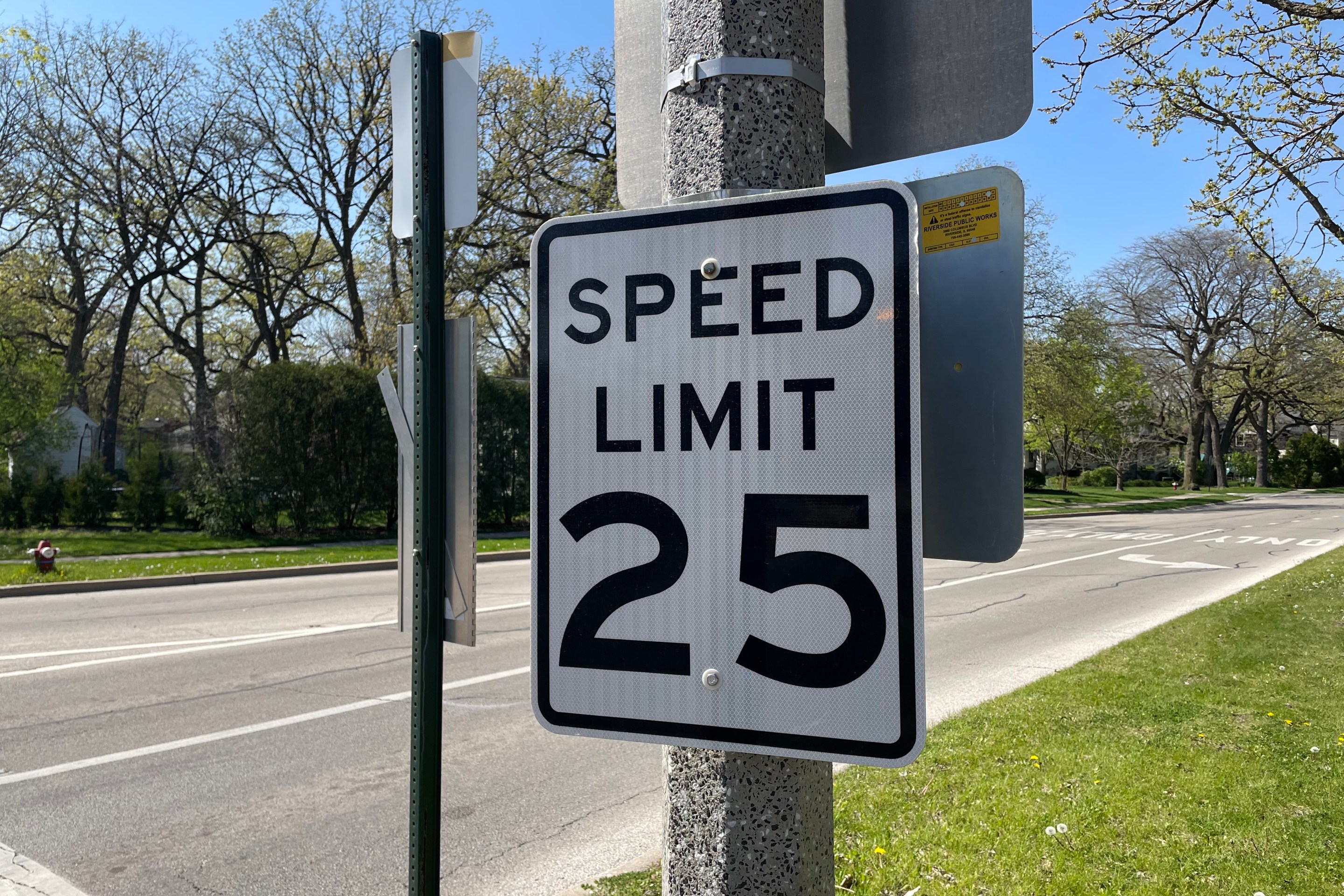A tale of two cities: What cycling in Vienna and Budapest reminded me about Chicago
6:10 PM CDT on May 4, 2022

Waiting for a light on a sidewalk-level bike lane in Vienna, which appears to have a seamless network of car-separated bikeways. Photo: John Greenfield
Note: I'm no expert on any of the cities I visited on this trip, and I haven't thoroughly researched their transportation systems. Rather, this post reflects my initial impressions of what I saw. If you feel I got anything wrong here, feel free to leave a comment or email me at jgreenfield[at]streetsblog[dot]org.
Earlier this spring I had the opportunity to visit Hungary, the country my paternal grandfather emigrated from in the early 20th Century, for my first time. I spent most of my vacation in Budapest, where I had a wonderful time checking out the grandiose classical architecture, soaking in thermal baths, and sampling the excellent food (great pastries) and wine.
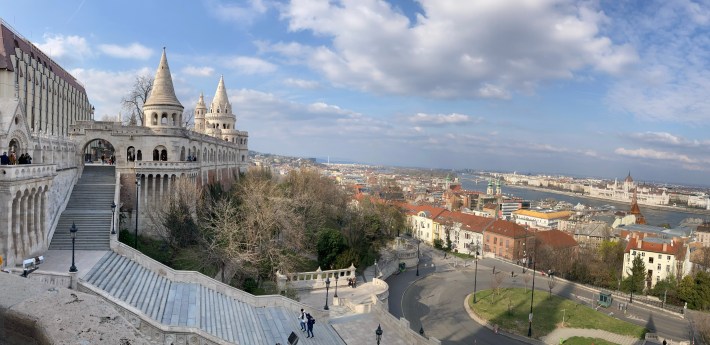
The good times during my visit were tempered somewhat by the reelection of Hungary's authoritarian prime minister Victor Orban, as well as my awareness of the war in nearby Ukraine. By coincidence, on my way home to the U.S., I ran into the wife of an old bandmate of mine at the Munich, Germany, airport. While visiting her family in Krakow, Poland, she delivered donations of socks and underwear to Ukrainian refugees.
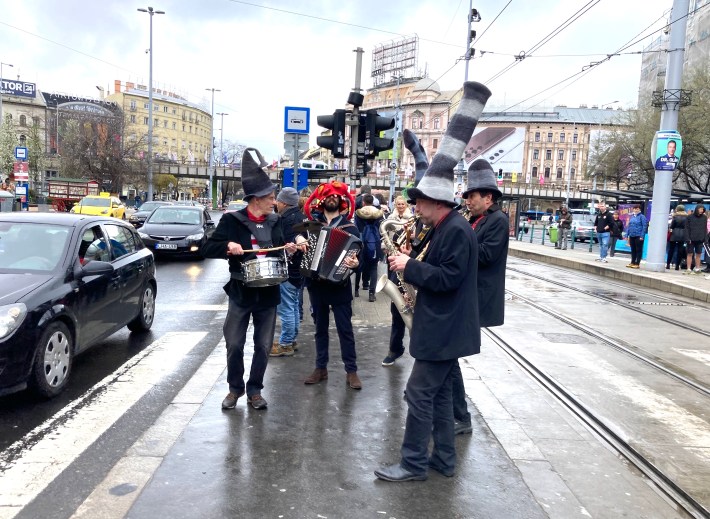
Being a sustainable transportation geek, while in central Europe I naturally checked out lots of local walking, biking, and transit stuff. To pass the time while my partner attended a string ensemble workshop, I spent a few days biking solo from Vienna, Austria, back to Budapest via Slovakia. My route was about 220 miles, almost entirely on bike trails along the Danube River. Instead of sleeping in a tent, I "credit card camped," staying at inexpensive hotels and pensions.
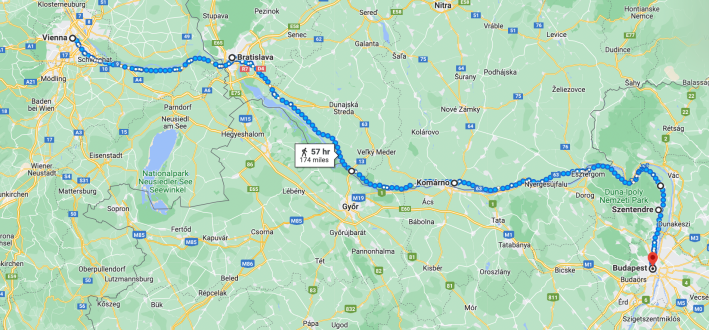
Given the challenging early-spring weather I encountered – one day of stiff headwinds, plus downpours during the last half of my journey – I'd describe my experience as character-building. But if you're ever in this part of the world during warmer months and enjoy bike touring, I'd definitely recommend this itinerary. (I navigated via this printed guide, plus Google Maps on my phone.) The route is basically all downhill, and it goes past lots of quaint villages, Roman ruins, and medieval castles.
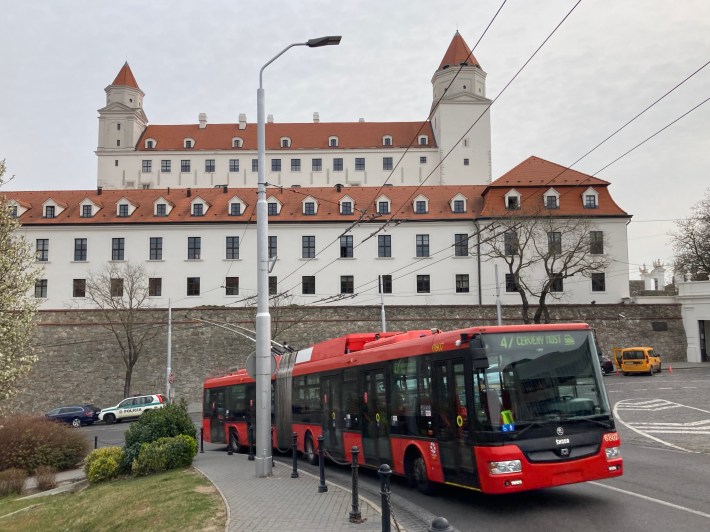
Lufthansa airline wanted to charge me a $460 total surcharge to bring my own touring bike. So instead I rented a slower-but-comfy mountain bike-style touring cycle with panniers from the Vienna Explorer rental and tour company and dropped it off at their Budapest outpost, which was very convenient, and only about a third of the cost of the airline baggage fee.
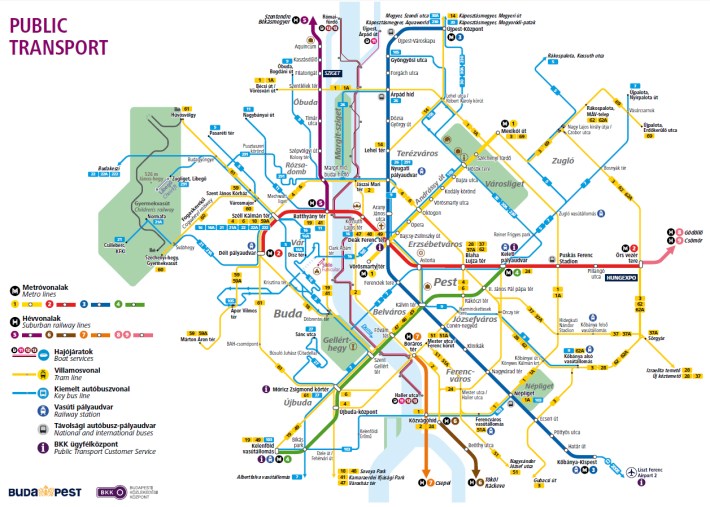
One of the biggest takeaways from my vacation was that the transit systems in all three capital cities I visited – Vienna, Bratislava, and Budapest – seemed to be much better than the CTA. In Budapest I mostly got around by buses, trams, and subways. Transit in that city seemed to be everything it should be: cheap, ubiquitous, frequent, reliable, fast, and dignified.
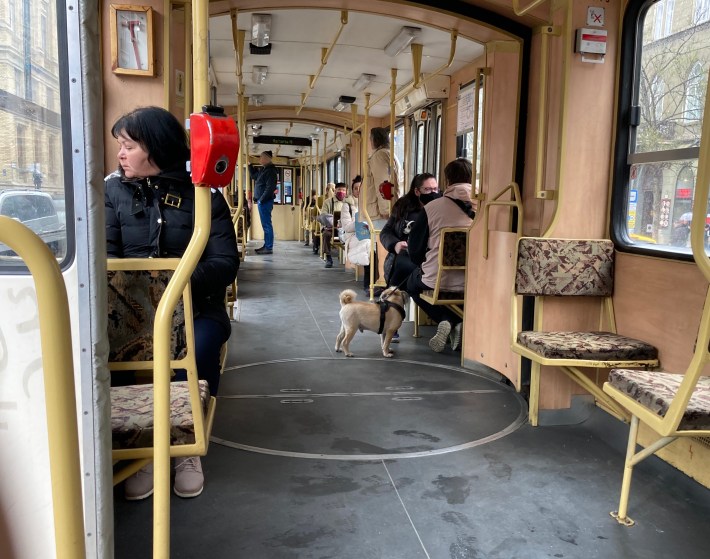
Efficient transit routes appeared to serve every corner of Budapest. The buses and trams work on a proof of payment system, where you buy a ticket in advance instead of waiting in line to pay on the vehicle, as is the case with CTA buses, which increases "dwell time" at stops. Occasionally fare checkers come aboard the Budapest vehicles, and there's a stiff fine if you're caught without a ticket.
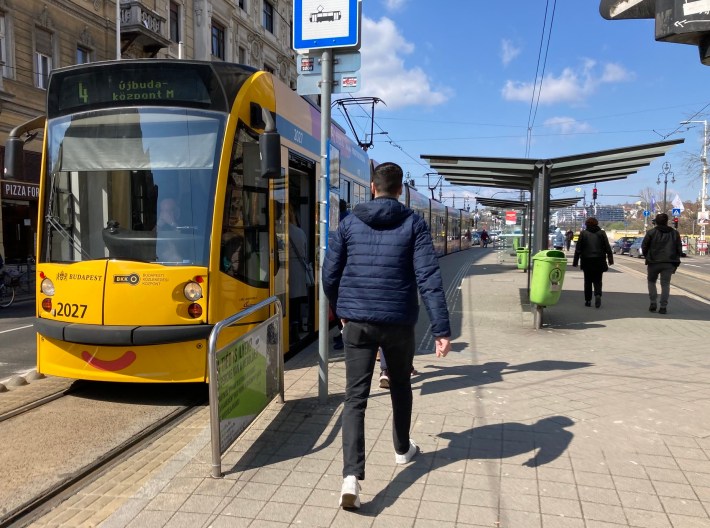
Budapest streetcars generally have their own right of way, and there are limited stops, which means transit is often faster than car-based transportation. For example, it was delightful to pass stopped automobile traffic during this ride on Erzsébet krt., one of the ring roads in the Pest side of the Danube.
While I spent a lot less time in Vienna and Bratislava, it seemed like the transit situation was similarly good in those places.
Biking in Budapest was a different story. There seemed to be very little dedicated space on streets for cycling, and the few bike lanes I saw were limited to paint on the road, usually next to multiple car lanes, and often fading. I didn't see any protected bike lanes at all.
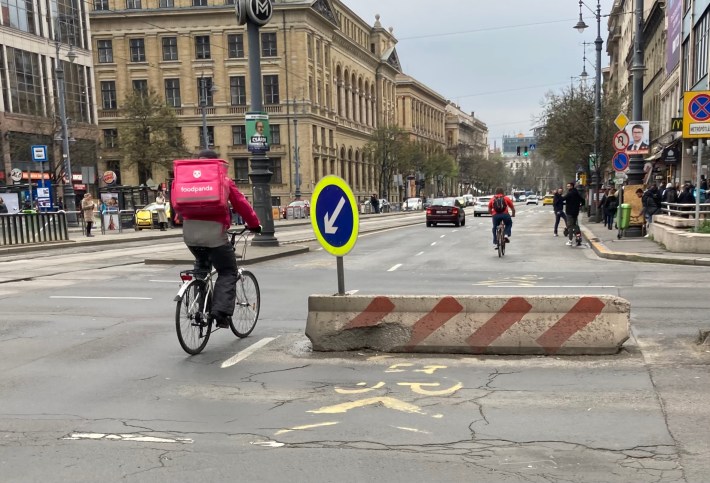
As a result, biking seems to be a fairly unpopular mode in the Hungarian capital. Most of the people on bikes seemed to be "strong and fearless" cyclists, often delivery bikers. I saw few, if any, women, children, or seniors on bikes.
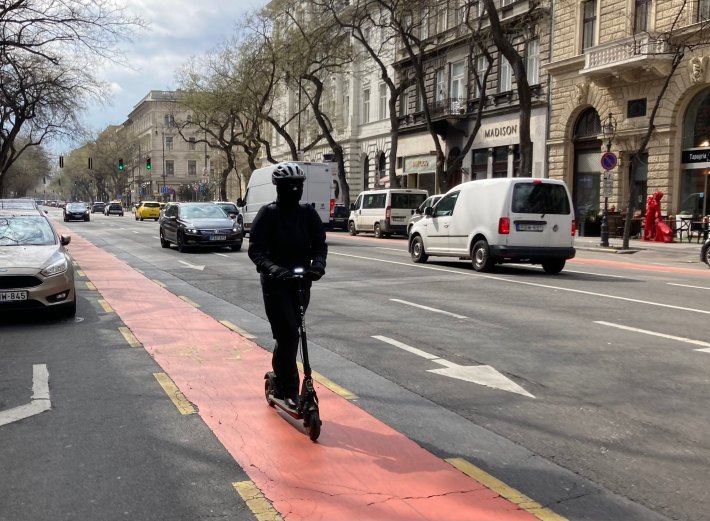
In contrast, cyclists were everywhere in Vienna, a city with fairly similar geography. That was despite the fact I've never heard heard of the Austrian capital described as a cycling Mecca.
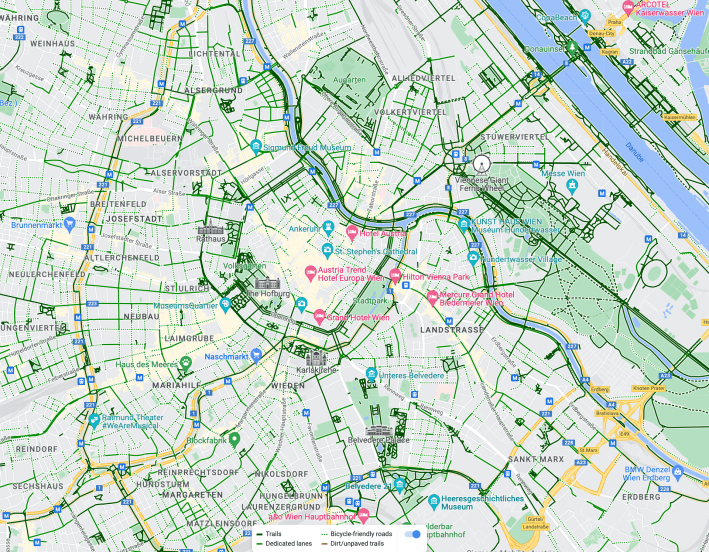
The obvious difference from Budapest was that in Vienna it seemed like every main street where it was at all possible for motorists to drive fast had off-street bike lanes.
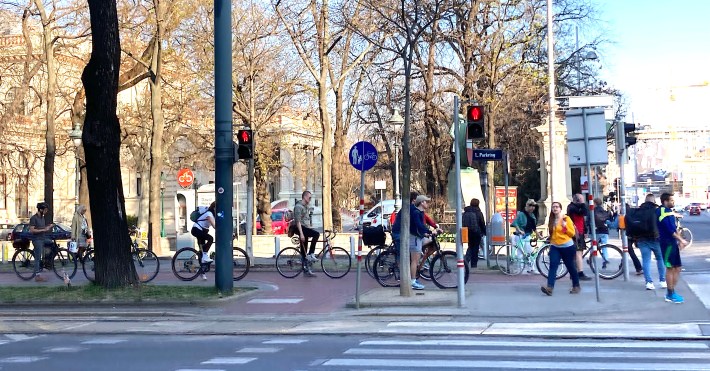
In some cases the Vienna bike lanes were raised above the street, but below sidewalk level. In other locations, they were simply painted on the sidewalk. And on some streets the bike lanes were located in grassy medians between lanes of traffic.
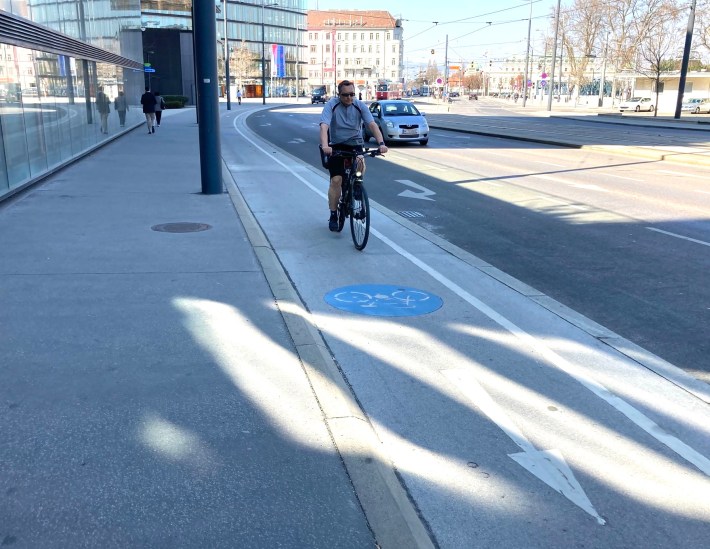
I saw Viennese of all ages on bikes, wearing everything from Lycra to business attire. During my 24 hours in town traveling all over the central city, navigating via audible Google Maps directions, I found it very easy and comfortable to get around on two wheels. On any street where I might have wanted dedicated, protected biking space, it existed.
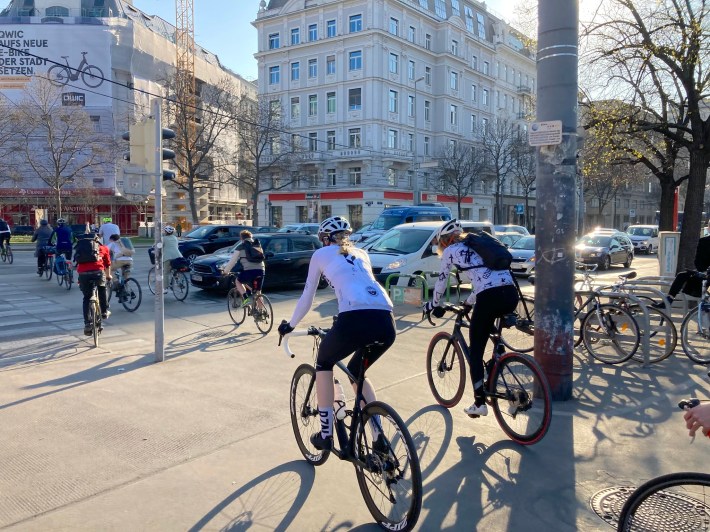
The contrast between Budapest and Vienna really hammered home something I already knew about cycling in Chicago, where the bike network is is probably somewhat better than in the former city, but nowhere near as cohesive and low-stress as in the latter. If Chicago wants to use biking to improve traffic safety, reduce congestion, and fight climate change, we've got to make it a comfortable and convenient option that "normal" people will consider using. That means creating a citywide network of connected, protected bikeways.
You can view more of my transportation photos from Budapest, Vienna, and Bratislava here.
In addition to editing Streetsblog Chicago, John writes about transportation and other topics for additional local publications. A Chicagoan since 1989, he enjoys exploring the city on foot, bike, bus, and 'L' train.
Read More:
Stay in touch
Sign up for our free newsletter
More from Streetsblog Chicago
Today’s Headlines for Tuesday, April 30
Equiticity and ATA: Passing a 25 mph speed limit should be combined with street redesigns that calm traffic
Equiticity, a mobility justice nonprofit, says the new speed limit shouldn't involve increased enforcement, which it says would disproportionately impact drivers of color
Johnson appoints one West Side pastor to CTA board, then nominates another West Side pastor for RTA board
Supporters argue that, despite his lack of transit expertise, Ira Acree’s social justice experience and political connections could be an asset for the RTA board.

